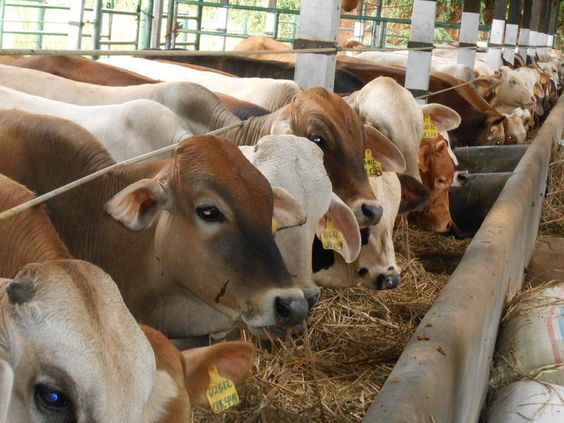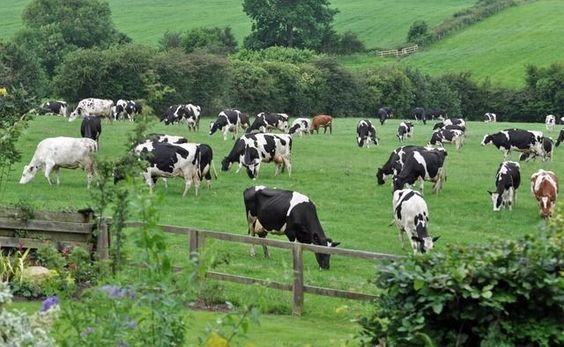Cow Growth: A Comprehensive Exploration
Cow Growth, both beef and dairy, are crucial components of the global agricultural industry. Understanding their growth patterns is essential for maximizing their productivity and ensuring their well-being. This article delves into the world of cow growth, exploring the factors that influence it, the goals of optimized growth, and practical ideas to achieve them.
Opinions on Cow Growth:
-
Nature vs. Nurture: There’s a constant debate on the relative influence of genetics (nature) and environmental factors (nurture) on cow growth. While breed plays a significant role in determining growth potential, proper nutrition, healthcare, and management practices significantly impact how well a cow reaches its genetic potential.
-
Growth vs. Quality: An opinion exists that prioritizing rapid growth can compromise meat quality in beef cattle. Some advocate for slower, more natural growth periods to enhance flavor and texture. In dairy cows, the focus might shift towards milk quality and udder health over maximizing milk production.
-
Ethical Considerations: Concerns regarding animal welfare are increasingly important. Some argue that intensive growth practices can be stressful for cows, raising ethical questions about prioritizing production efficiency over animal well-being.
Benefits of Optimized Cow Growth:
-
Improved Animal Health: When cows grow at a healthy rate, they develop a robust immune system, reducing their susceptibility to diseases. This translates to fewer veterinary interventions, lower treatment costs, and improved overall well-being for the animals.
-
Enhanced Productivity: Optimal growth leads to a range of benefits depending on the cow’s purpose:
- Dairy Cows: Increased milk yield translates to greater milk production per cow, leading to higher profits for farmers and a more reliable supply of milk for consumers. Additionally, cows with optimal growth tend to have longer productive lifespans, further contributing to dairy farm profitability.
- Beef Cattle: Faster growth cycles can reduce the time it takes for beef cattle to reach market weight. This translates to lower feed costs for farmers and potentially higher profitability. Additionally, optimal growth promotes better muscle development and marbling in the meat, leading to higher-quality beef products that fetch premium prices.
-
Economic Advantages: Beyond the direct benefits to farmers mentioned above, optimal cow growth contributes to the broader agricultural economy in several ways:
- Increased Efficiency: Faster growth cycles and improved milk yields lead to more efficient use of resources like feed, land, and labor. This translates to a more sustainable and cost-effective agricultural system.
- Job Creation: A thriving cattle industry creates jobs across the agricultural supply chain, from feed production and animal transportation to processing plants and retail outlets.
- Global Food Security: By optimizing cow growth and production, we can contribute to a more reliable supply of dairy and meat products to meet the growing demands of a global population.
-
Environmental Sustainability: While intensive growth practices can have negative environmental impacts, well-managed cow growth strategies can contribute to environmental sustainability in several ways:
- Improved Feed Conversion: Efficiently converting feed into meat or milk reduces waste and minimizes the environmental footprint associated with feed production.
- Manure Management: Manure from healthy, well-fed cows can be a valuable source of organic fertilizer. Proper manure management practices can minimize environmental pollution and contribute to soil health.
- Reduced Methane Emissions: While methane emissions from cows are a concern, healthy cows tend to be more efficient at utilizing their feed, potentially leading to lower overall methane emissions per unit of product produced.
Goals of Optimized Cow Growth:
-
Achieving Genetic Potential: The primary goal is to ensure each cow reaches its full growth potential as dictated by its breed. This involves creating an environment that allows for optimal expression of the cow’s genetic makeup.
-
Optimizing Production Efficiency: For both beef and dairy, the goal is to maximize production (meat or milk) while minimizing resource inputs. Efficient growth plays a crucial role in achieving this goal.
-
Ensuring Animal Well-being: Growth optimization should not come at the expense of animal welfare. The goal is to achieve optimal growth while maintaining good health and minimizing stress.
Ideas and Suggestions for Optimizing Cow Growth:
-
Nutrition: Providing a balanced diet formulated for the specific growth stage and breed is critical. This includes high-quality forages, grains, and essential supplements tailored for optimal development.
-
Healthcare: Regular veterinary checkups, vaccinations, and parasite control help prevent growth-stunting illnesses. Addressing health concerns promptly minimizes setbacks in growth.
-
Genetics: Selective breeding for desired growth traits can enhance a herd’s overall growth potential over time. Investing in high-quality breeding stock can reap benefits in the long run.
-
Management Practices: Providing cows with a comfortable, low-stress environment promotes optimal growth. This includes ensuring adequate space, proper ventilation, and clean living conditions.
-
Growth Monitoring: Regular weight monitoring and tracking growth curves help identify any potential issues early on. This allows for adjustments in diet, management, or healthcare practices to address any growth deficiencies.
-
Technology Integration: Consider using technologies like wearable monitors to track vital signs and activity levels. This data can provide valuable insights into growth patterns and help tailor management strategies for individual cows.
Conclusion Optimizing cow growth requires a holistic approach that considers both production goals and animal welfare. By understanding the factors influencing growth, farmers and ranchers can implement strategies to achieve a balance between efficient production and a healthy, well-cared-for herd. Continuous research on nutrition, genetics, and management practices will continue to evolve our understanding of cow growth, allowing us to achieve even greater levels of efficiency and sustainability in the future.






